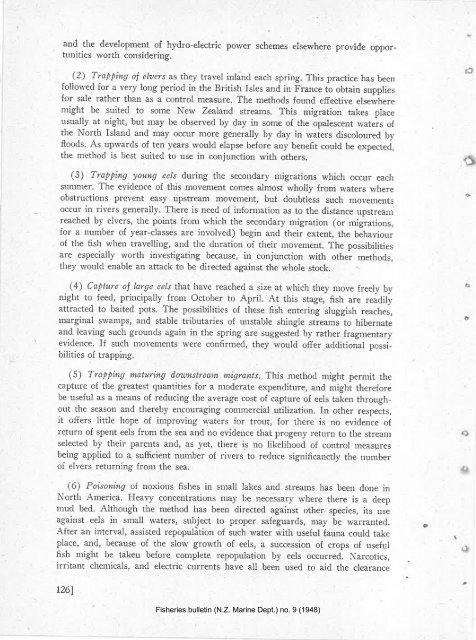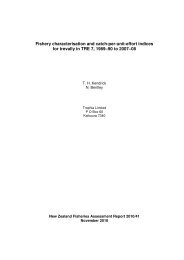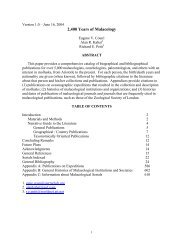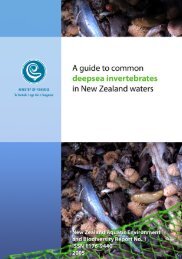N.Z. MARINE DEPARTMENT-FISHERIE,S BULLETIN No. .į
N.Z. MARINE DEPARTMENT-FISHERIE,S BULLETIN No. .į
N.Z. MARINE DEPARTMENT-FISHERIE,S BULLETIN No. .į
Create successful ePaper yourself
Turn your PDF publications into a flip-book with our unique Google optimized e-Paper software.
end the development of hydro-electric power schemes elsewhere províde opportunities<br />
worth considering.<br />
(2) Traþþittg of elzters as they travel inland each spring. This practice has been<br />
followed for a very long period in the British Isles and in France to obtain supplies<br />
for sale rather than as a control measure. The methocls found effective elsewÈere<br />
rniglrt be suited to some New Zealand streams. This n-rigration takes place<br />
trsually at night, but may be observed by day in some of the opalescent waters of<br />
the <strong>No</strong>rtl-r Island and may occur more generally by day in waters discoloured by<br />
floods. As upwards of ten years would elapse before any benefit could be expecteã,<br />
the method is best suited to use in conjunction with others.<br />
(3) Traþþing young øels during the secondary migrations which occur eacl-r<br />
summer. The evidence of this movement cornes almost wholly from waters where<br />
obstructions prevent easy upstream movement, but doubtless such movements<br />
occur in rivers generally. There is need of information as to the distance upstream<br />
reached by elvers, the points from which the secondary migration (or migratio¡s,<br />
for a number of year-classes are involved) begin and their extent, the behaviour<br />
of the frsh when travelling, and the duration of their rnovement. The possibilities<br />
are especially worth investigating because, in conjunction with other methocls,<br />
they would enable an attack to be directed against the whole stock.<br />
(4) Caþture of large eels that have reached a size at which they move freely by<br />
night to feecl, principally fron-r october to April. At this stage, fish "r. ,.áa;ti<br />
attracted to baited pots. The possibilities of these fish entering sluggish reaches,<br />
marginal swamps, and stable tributaries of unstable shingle streams to hibernate<br />
and leaving such grounds again in the spring are suggested by rather fragmeptary<br />
evideuce. If such movements were conÊrmed, they would offer additional possibilities<br />
of trapping.<br />
(5) Traþþing wøturing dozvnstream ntigrants. This nTethocl might permit the<br />
capture of the greatest quantities for a moderate expencliture, and might therefore<br />
be useful as a ûIeans of reducing the average cost of capture of eels taken throughout<br />
the season and thereby encouraging commercial utilization. In other respects,<br />
it offers little hope of in-rproving waters for trout, for there is no evidelce of<br />
return of spent eels fronr the sea and no evidence that proger-ry Leturn to the streanr<br />
selected by their parents and, as yet, there is no likelihoocl of control lneasures<br />
being applied to a sufficient nunber of rivers to reduce significanctly the number<br />
of elvers returning from the sea.<br />
(6) Poisoning of noxious fishes in small lakes and strearns has been done in<br />
<strong>No</strong>rth An,erica. Fleavy concentrations may be necessary where there is a cleep<br />
ruucl bed. Although the method has been directecl against other. species, its use<br />
against eels in sr-r-rall waters, snbject to proper safeguards, nray be warranted.<br />
After an interval, assisted repopuÈtion of such water with useful fauna coulcl take<br />
place, and, because of the slow growth of eels, a succession of crops of useful<br />
fish might be taken before complete repopulation by eels occurred. Narcotics,<br />
irritant chetlicals, and electric currents have all been used to aicl the clearance<br />
126l<br />
Fisheries bulletin (N.Z. Marine Dept.) no. 9 (1948)<br />
â







